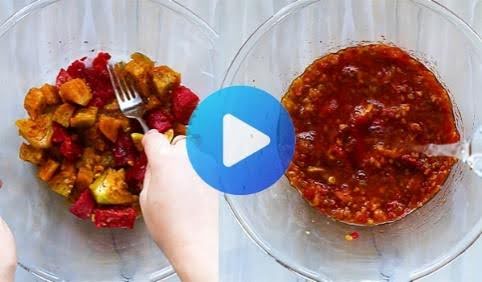Starting a ketogenic lifestyle often feels like saying goodbye to many favorite foods. Carbs seem to be everywhere. Breads, pastas, rice, potatoes, sugary treats – they are staples in many diets. Giving them up can feel hard, maybe even impossible. But I am here to tell you it does not have to be that way. Over my years helping people, especially women, navigate their weight loss journeys with keto, I have discovered some amazing food swaps. These are not just okay substitutes; they are game-changers. They make keto meals delicious, satisfying, and much easier to stick with long term.
Finding good swaps is super important when you are trying to lose weight or just eat healthier with keto. Why? Because feeling deprived is a quick way to fall off track. When you constantly miss your old favorites, willpower can run low. This is especially true for women, as hormonal changes can sometimes bring on specific cravings. Having tasty, keto-friendly alternatives ready helps you stay satisfied and in control. These swaps help keep your carb count low, allowing your body to stay in ketosis, that fat-burning state we aim for on keto. Plus, many of these swaps add extra nutrients and fiber, which are great for digestion and overall health.
You Might Be Interested In: Delicious Keto Meals Tailored to Your Needs With Custom Keto Diet
Let’s dive into some of the most surprising and useful keto swaps that have totally changed how I approach keto cooking, and how my clients do too.
Rethinking Grains and Starches
This is often the biggest hurdle for people starting keto. Grains and starchy vegetables are comfort foods for many. But the keto world has gotten creative.
Rice Alternatives
White and brown rice are high in carbs. A single cup can blow your entire daily carb limit on keto. Luckily, we have options.
- Cauliflower Rice: This is probably the most famous keto swap. You can buy it frozen, fresh, or make it yourself by pulsing cauliflower florets in a food processor until they look like rice grains. It has a mild flavor, so it takes on the taste of whatever you cook it with. Sauté it with some butter or oil, garlic, and herbs. Use it as a base for stir-fries, curry dishes, or even in keto sushi rolls. It is much lower in calories and carbs than rice and adds a good dose of vitamin C and fiber. Be careful not to overcook it, or it can get mushy. A quick sauté or roast works best.
- Broccoli Rice: Similar to cauliflower rice, you can make this by pulsing broccoli florets. It has a slightly stronger, greener flavor than cauliflower rice but works well in similar dishes. It is packed with vitamins K and C.
- Shirataki Rice: Made from the konjac plant root, this rice is basically carb-free and calorie-free. It is mostly fiber and water. It often comes packed in liquid that smells a bit fishy, so you need to rinse it very well under running water. Then, dry-pan fry it for a few minutes to remove excess moisture and improve the texture. The texture is a bit more gelatinous or chewy than regular rice, which some people like and others do not. It absorbs flavors well, making it good for saucy dishes.
- Hearts of Palm Rice: Some brands now offer rice made from hearts of palm. It has a slightly tangy taste, similar to artichoke hearts, and holds its texture well when cooked. It needs less prep than shirataki rice and offers a different flavor profile.
Pasta Without the Carbs
Pasta is another beloved food that is off-limits in its traditional form on keto. But fear not, pasta lovers.
- Zucchini Noodles (Zoodles): Use a spiralizer tool to turn fresh zucchini into long noodle shapes. You can sauté them briefly (do not overcook, they release water), or even eat them raw with a sauce. They are light, fresh, and pair well with pesto, marinara (watch sugar content), or creamy Alfredo sauces. Zucchini is low in carbs and calories and provides potassium.
- Spaghetti Squash: When you roast a spaghetti squash, the inside flesh scrapes out into strands that look like spaghetti. It has a mild, slightly sweet flavor and a firmer texture than zoodles. Bake it cut-side down until tender, then use a fork to pull out the strands. It is great with hearty meat sauces or just butter and parmesan.
- Shirataki Noodles: Like the rice version, these konjac-based noodles are very low in carbs and calories. Rinse them well and dry-pan fry before adding sauce. They come in various shapes like spaghetti, fettuccine, and angel hair. The texture is the main adjustment; they are chewier than wheat pasta.
- Palmini Noodles: These noodles are made from hearts of palm, cut into pasta shapes like linguine. They have a slight crunch and a taste similar to artichokes. Rinsing them well can help mellow the flavor. They hold up well to cooking and sauces.
- Edamame or Black Soybean Pasta: These are higher in protein and fiber than other options but also have a few more carbs. Check labels carefully. They offer a texture closer to traditional pasta but should be used in moderation depending on your daily carb goals.
Potato Swaps
Mashed potatoes, roasted potatoes, French fries – they are hard to give up. Here are some keto stand-ins.
- Mashed Cauliflower: Steam or boil cauliflower florets until very tender. Drain them extremely well (excess water makes it soupy). Then, mash or blend them with butter, heavy cream, cream cheese, garlic, salt, and pepper. It can be surprisingly creamy and satisfying. Adding roasted garlic or some parmesan cheese boosts the flavor.
- Roasted Radishes: Yes, radishes. When roasted, radishes lose their sharp bite and become tender and milder, somewhat like roasted potatoes. Toss them with olive oil, salt, pepper, and herbs like rosemary before roasting at a high temperature until slightly browned and soft.
- Turnips: Turnips have fewer carbs than potatoes and can be roasted, mashed, or added to stews. They have a slightly earthy flavor.
- Celeriac Root (Celery Root): This knobby root vegetable has a mild celery-like flavor. It can be mashed, roasted, or made into fries. Peel it well before using. Its carb count is lower than potatoes but higher than cauliflower, so watch portions.
Bread and Wrap Wonders
Sandwiches, burgers, tacos – they usually involve bread or tortillas. Keto requires some clever thinking here.
- Lettuce Wraps: Large, crisp lettuce leaves (like iceberg, butter lettuce, or romaine) make great wraps for burgers, tacos, or sandwich fillings. They are fresh, crunchy, and virtually carb-free.
- Cabbage Leaves: Lightly steamed or raw cabbage leaves can also be used as wraps. They are sturdier than lettuce.
- Cloud Bread (Oopsie Bread): Made primarily from eggs, cream cheese, and cream of tartar, these light, fluffy rounds bake up like little clouds. They are very low carb and can be used as buns or small bread slices. They are delicate, so handle them gently.
- Keto Breads/Buns: Many recipes exist online for bread made with almond flour, coconut flour, psyllium husk, and eggs. You can also find some store-bought options, but always check the ingredients and carb counts carefully. Homemade often tastes better and avoids weird additives.
- Keto Tortillas: Use almond flour or coconut flour to make your own low-carb tortillas. There are also store-bought versions made with various keto-friendly ingredients. Cheese wraps (large slices of provolone or specially made cheese wraps) are another option – they get crispy when baked or stay soft for wrapping.
Flour Power: Baking Keto Style
Baking seems impossible without traditional flour, but keto bakers have found ways.
- Almond Flour: Made from ground blanched almonds, this is a popular keto baking staple. It creates moist, slightly dense baked goods. Use “superfine” almond flour for the best texture in cakes, muffins, cookies, and pancakes. It is higher in fat and calories than wheat flour but low in carbs and provides vitamin E and magnesium. It does not absorb liquid the same way as wheat flour, so recipes need specific adjustments.
- Coconut Flour: Made from dried, ground coconut meat, this flour is very high in fiber and extremely absorbent. You need much less coconut flour compared to almond or wheat flour, and you usually need more eggs and liquid in recipes to prevent dryness. It has a distinct coconut flavor, which works well in some recipes but not all. It can be tricky to work with at first.
- Psyllium Husk: This is mostly fiber and acts as a binder in keto baking, helping to mimic the structure gluten provides in traditional bread. Use it in small amounts, often alongside almond or coconut flour, especially for bread recipes. Make sure to use the powder form for baking unless a recipe specifies whole husks.
- Other Nut/Seed Flours: Flaxseed meal, sunflower seed flour, and hazelnut flour can also be used in keto baking, each bringing its own flavor and properties.
Experimenting with keto flours takes practice. Do not expect a perfect 1:1 swap for wheat flour. Follow keto-specific recipes carefully, especially when you are starting out.
Introducing: Benefits of Custom Meal Plans With Keto Diet
Sweeteners Without the Sugar Spike
A sweet tooth can be hard to manage on keto. Thankfully, several sugar substitutes fit the lifestyle.
- Erythritol: A sugar alcohol that tastes quite similar to sugar but has almost zero calories and does not raise blood sugar levels. It is about 70% as sweet as sugar. Some people notice a slight cooling sensation. It works well in baking and drinks. Granular and powdered versions are available. Large amounts can sometimes cause digestive upset for sensitive individuals.
- Stevia: A natural sweetener derived from the stevia plant. It is much sweeter than sugar, so you need very little. It has no calories or carbs. Some find it has a slightly bitter or licorice-like aftertaste, especially in liquid forms. It is available as liquid drops, powder, and blends (often mixed with erythritol).
- Monk Fruit: Another natural, zero-calorie sweetener from a small Asian fruit. It is also much sweeter than sugar and generally has less aftertaste than stevia for most people. It is often sold blended with erythritol to provide bulk and measure more like sugar.
- Allulose: A newer sweetener that is chemically a “rare sugar.” It tastes very similar to sugar and even caramelizes like sugar, making it great for certain desserts. It has very few calories and minimal impact on blood sugar. It is about 70% as sweet as sugar. Availability might be less widespread than other options.
When choosing sweeteners, consider taste preference, how you plan to use it (baking vs. drinks), and individual digestive tolerance. Start with small amounts. Avoid maltitol, often found in “sugar-free” candies, as it can raise blood sugar and cause significant digestive issues for many.
Fruit Choices on Keto
Most fruits are high in sugar (fructose) and need to be limited or avoided on keto.
- Berries: Strawberries, blueberries, raspberries, and blackberries are the go-to fruits on keto. They are lower in carbs and higher in fiber and antioxidants compared to other fruits. Enjoy them in moderation – a small handful can satisfy a fruit craving without derailing ketosis. They are great with keto yogurt, in smoothies (using unsweetened almond milk), or just on their own.
- Avocado: Technically a fruit, avocado is a keto superstar. It is packed with healthy fats, fiber, and potassium, and very low in net carbs. Use it in salads, smoothies, guacamole, or just eat it with a spoon and some salt.
- Lemons and Limes: Great for adding flavor to water, dressings, and dishes without adding significant carbs.
Avoid high-sugar fruits like bananas, mangoes, grapes, apples, and oranges. While healthy in general, their sugar content is too high for a standard keto diet.
Dairy and Drinks: Keto Considerations
Not all dairy is created equal on keto. And sugary drinks are a definite no.
- Milk: Regular milk is surprisingly high in sugar (lactose). Swap it for unsweetened almond milk, unsweetened coconut milk (the kind in cartons, not cans), unsweetened cashew milk, or even macadamia milk. Always check the label to ensure it is unsweetened. Heavy cream and half-and-half can be used in moderation in coffee or recipes due to their higher fat and lower carb content compared to milk.
- Yogurt: Most yogurts are loaded with sugar. Opt for plain, full-fat Greek yogurt. It is higher in protein and lower in carbs than regular yogurt, but still contains some carbs, so check the label and portion size. Unsweetened coconut yogurt can be another option. Better yet, make chia seed pudding with unsweetened almond milk and keto sweetener for a creamy, high-fiber alternative.
- Cheese: Most hard and soft cheeses are very keto-friendly. They provide fat and protein with minimal carbs. Enjoy cheddar, mozzarella, cream cheese, goat cheese, parmesan, etc. Watch out for processed cheese products, which can sometimes contain added starches or sugars.
- Drinks: Water should be your primary beverage. Sparkling water (plain or with natural, unsweetened flavors), herbal teas (unsweetened), black coffee, and unsweetened almond/coconut milk are all great choices. Diet sodas sweetened with keto-friendly sweeteners can be okay occasionally for some, but water is always best. Avoid regular sodas, fruit juices, sweetened coffees and teas, and energy drinks.
Snack Attack: Keto Style
Snacking can be tricky. Chips, crackers, and candy bars are usually carb-heavy.
- Chips -> Pork Rinds (Chicharrones): These are crunchy, salty, and have zero carbs. Great for dipping in guacamole or keto-friendly dips. You can also crush them to use as a “breading” for chicken or fish.
- Chips -> Cheese Crisps: Bake small piles of shredded cheese (like cheddar or parmesan) on parchment paper until crispy. Let them cool completely. Instant crunchy, cheesy snack.
- Chips -> Vegetable Sticks: Celery, cucumber, bell peppers (in moderation) with a keto dip like ranch (check sugar), guacamole, or cream cheese mixed with herbs.
- Chips -> Seaweed Snacks: Crispy sheets of roasted seaweed are low in carbs and offer minerals.
- Candy -> Sugar-Free Chocolate: Look for chocolate sweetened with stevia, erythritol, or monk fruit. Dark chocolate (85% cacao or higher) is also lower in sugar and can be enjoyed in small amounts.
- Candy -> Keto Fat Bombs: Homemade snacks made with ingredients like coconut oil, butter, cream cheese, nuts, seeds, cocoa powder, and keto sweeteners. They provide healthy fats to keep you full. Many recipes are available online.
- Crackers -> Almond Flour Crackers: You can bake your own crackers using almond flour, cheese, and seeds.
- Crackers -> Seed Crackers: Crackers made primarily from seeds like flax, chia, sesame, and sunflower are high in fiber and healthy fats.
- Other Snack Ideas: Hard-boiled eggs, nuts (macadamias, pecans, walnuts are lower carb – watch portions), seeds (chia, flax, pumpkin), olives, jerky (check for added sugar), avocado.
Sauces and Condiments Savvy
Hidden sugars often lurk in sauces and condiments.
- Ketchup: Regular ketchup is full of sugar. Look for unsweetened or sugar-free versions made with keto-friendly sweeteners, or use tomato paste sparingly for flavor.
- BBQ Sauce: Another major sugar source. Find sugar-free brands or make your own using tomato paste, vinegar, spices, and a keto sweetener.
- Salad Dressings: Many bottled dressings contain sugar and unhealthy oils (like soybean or canola). Opt for simple oil (olive, avocado) and vinegar dressings. Read labels carefully on creamy dressings like Ranch or Caesar – choose full-fat versions with minimal sugar. Making your own mayonnaise with avocado oil or light olive oil is a great base for creamy dressings.
- Soy Sauce: Can contain wheat and carbs. Use tamari (gluten-free soy sauce) or coconut aminos (slightly sweeter, lower sodium, soy-free) instead, in moderation.
Tips for Making Swaps Work for You
Finding and using keto swaps successfully takes a little effort, but it gets easier.
- Read Labels: This is my number one tip. Always check the nutrition facts and ingredient list. Look for total carbs, fiber (to calculate net carbs: total carbs – fiber – sugar alcohols like erythritol), and hidden sugars (corn syrup, dextrose, maltodextrin, etc.).
- Experiment: Not every swap will be perfect for every dish or every person. Try different options to see what you like best in terms of taste and texture. Do not be afraid to tweak recipes.
- Start Simple: Do not try to replace everything at once. Pick one or two meals or snacks you miss and find a good swap for those first.
- Manage Expectations: Keto bread will not taste exactly like fluffy white bread. Zoodles are not identical to wheat pasta. Appreciate the swaps for what they are – delicious, healthy alternatives that fit your lifestyle.
- Focus on Whole Foods: While swaps are great, build your meals primarily around whole, unprocessed keto foods like meat, fish, eggs, low-carb vegetables, healthy fats, and nuts/seeds. Use swaps to enhance variety and satisfaction.
- Listen to Your Body: Pay attention to how different swaps make you feel. Some people are sensitive to certain sweeteners or flours. Notice your energy levels, digestion, and cravings. Adjust as needed. This is key for sustainable health, especially tuning into what works best for your female body.
Making these simple changes in your kitchen can truly transform your keto journey. It stops feeling like a diet of restriction and becomes a sustainable, enjoyable way of eating. You can still have pizza (with a cauliflower or fathead crust), pasta night (with zoodles or palmini), satisfying desserts, and crunchy snacks. These swaps open up a whole world of delicious possibilities, making it easier to stick with your goals, whether they involve weight loss, better energy, or improved health markers. Cooking becomes fun again, not a chore focused on what you cannot have, but an exploration of all the amazing things you can have.
Related YouTube Video
Final Thoughts
Embracing these keto swaps has been a game-changer for me and so many women I have worked with. It is about finding joy and sustainability in your eating habits, not just cutting things out. When you have delicious alternatives for the foods you used to love, sticking to a healthier lifestyle feels less like a battle and more like a natural choice. These swaps prove that eating low-carb does not mean sacrificing flavor or enjoyment. It just means getting a little creative in the kitchen. Give some of these a try – you might be surprised how much they change your cooking and how great they make you feel.







